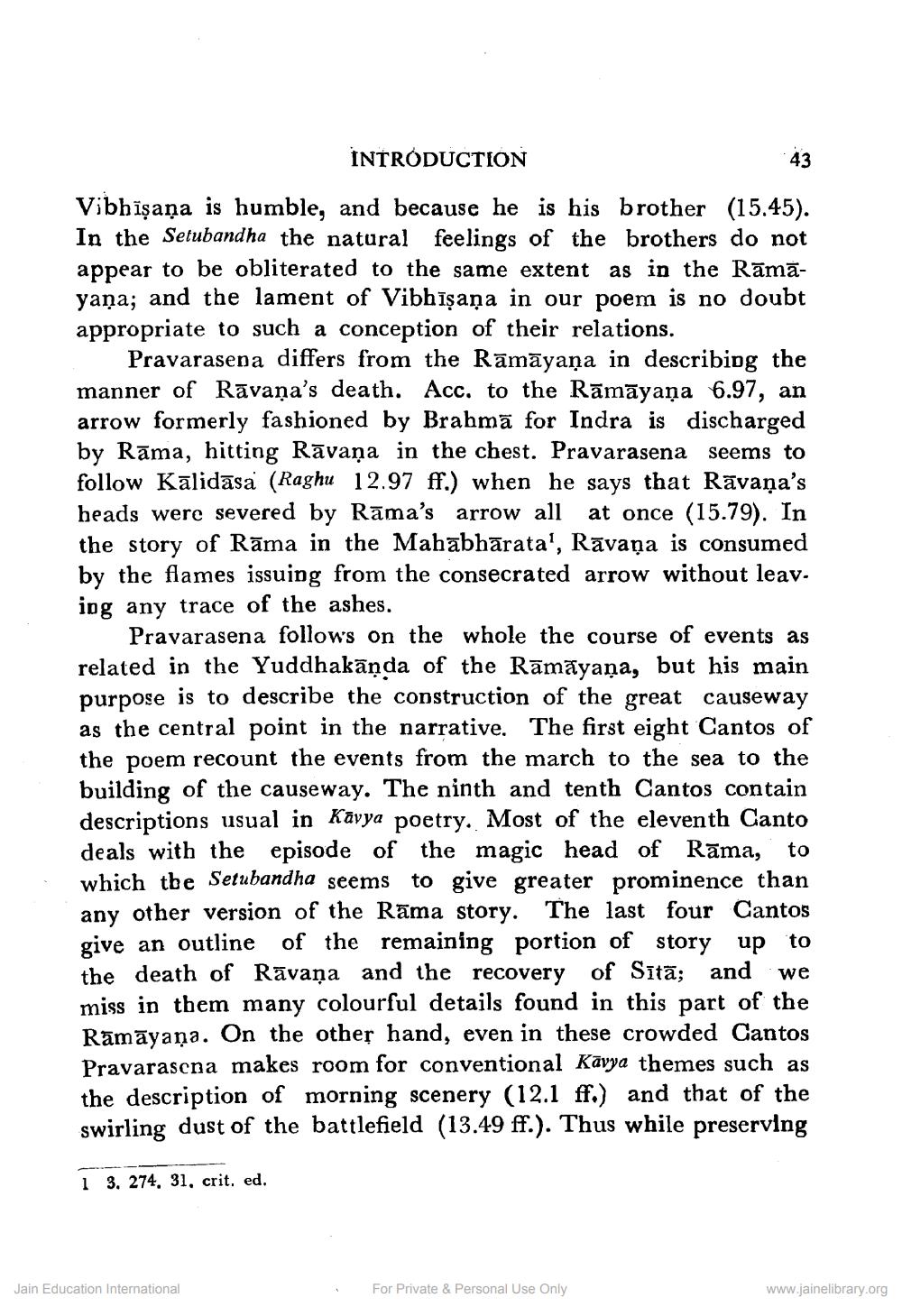________________
INTRODUCTION
Vibhiṣaṇa is humble, and because he is his brother (15.45). In the Setubandha the natural feelings of the brothers do not appear to be obliterated to the same extent as in the Ramāyana; and the lament of Vibhīṣaṇa in our poem is no doubt appropriate to such a conception of their relations.
Pravarasena differs from the Rāmāyaṇa in describing the manner of Ravana's death. Acc. to the Rāmāyaṇa 6.97, an arrow formerly fashioned by Brahma for Indra is discharged by Rama, hitting Rāvana in the chest. Pravarasena seems to follow Kalidasa (Raghu 12.97 ff.) when he says that Ravana's heads were severed by Rama's arrow all at once (15.79). In the story of Rāma in the Mahābhārata', Rāvana is consumed by the flames issuing from the consecrated arrow without leaving any trace of the ashes.
Pravarasena follows on the whole the course of events as related in the Yuddhakanda of the Rāmāyaṇa, but his main purpose is to describe the construction of the great causeway as the central point in the narrative. The first eight Cantos of the poem recount the events from the march to the sea to the building of the causeway. The ninth and tenth Cantos contain descriptions usual in Kavya poetry. Most of the eleventh Canto deals with the episode of the magic head of Rama, to which the Setubandha seems to give greater prominence than any other version of the Rama story. The last four Cantos give an outline of the remaining portion of story up to the death of Ravana and the recovery of Sita; and miss in them many colourful details found in this part of the Rāmāyaṇa. On the other hand, even in these crowded Cantos Pravarasena makes room for conventional Kavya themes such as the description of morning scenery (12.1 ff.) and that of the swirling dust of the battlefield (13.49 ff.). Thus while preserving
we
1 3. 274, 31, crit. ed.
Jain Education International
43
For Private & Personal Use Only
www.jainelibrary.org




